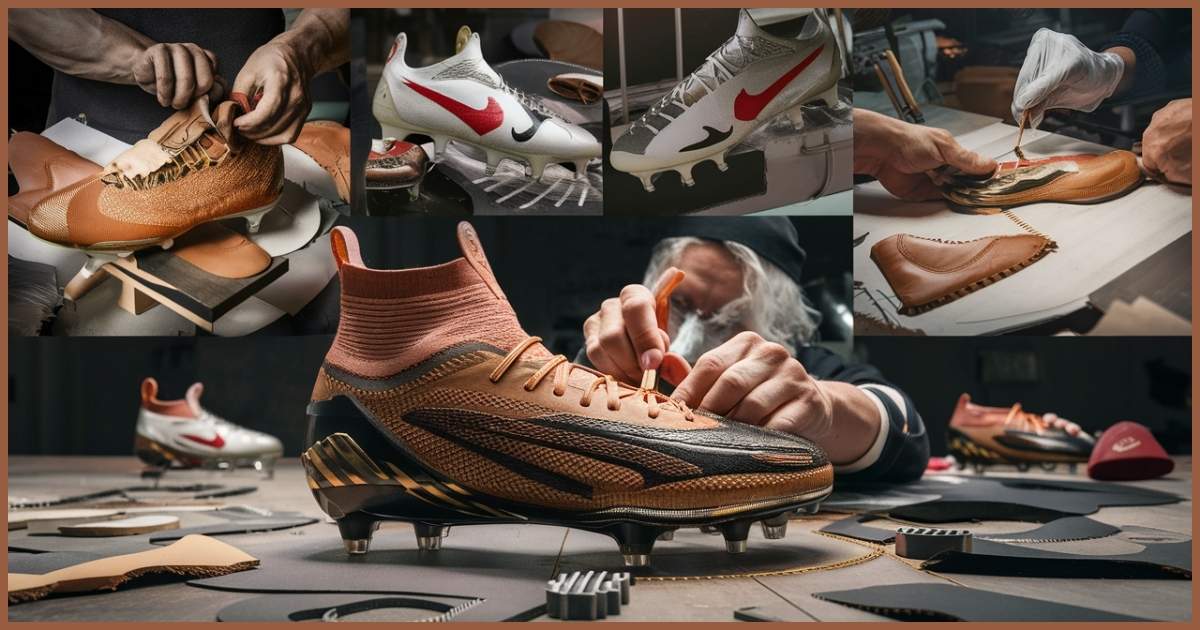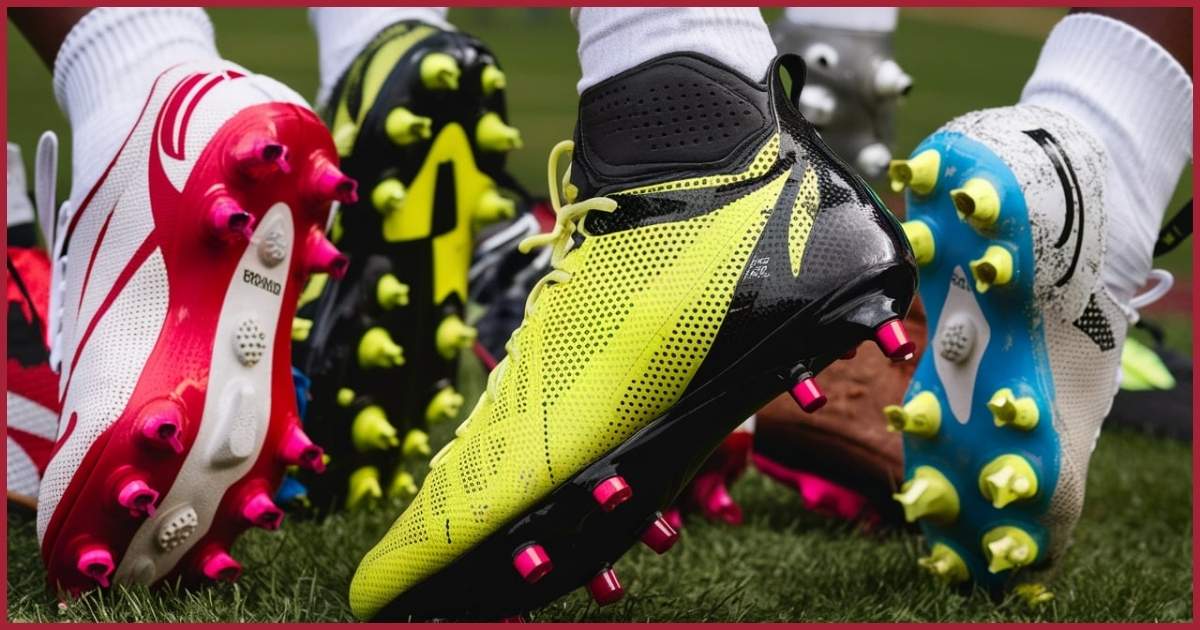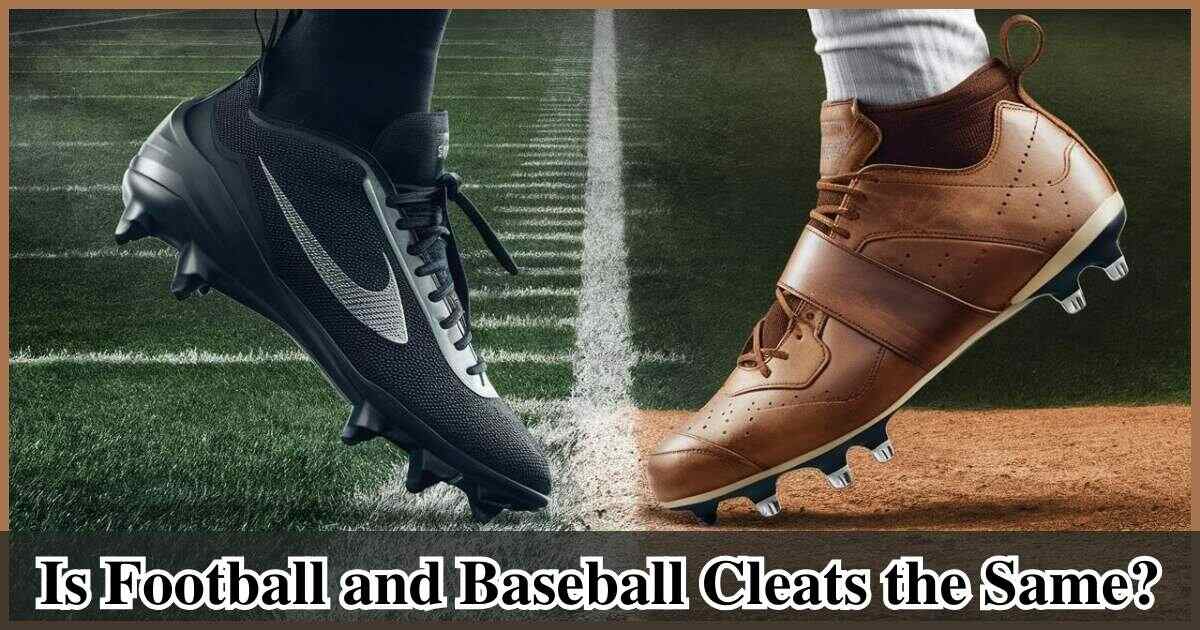Football and baseball cleats are specialized shoes designed for their respective sports. They provide traction and support for players on the field. While both types of cleats have spikes on the bottom, they differ in design and function.
Ever grabbed the wrong cleats for game day? You’re not alone. Many athletes have wondered if they can use the same shoes for both sports. The answer might surprise you and save you from a potential game-day disaster.
Football and baseball cleats have distinct differences that cater to each sport’s unique needs. From spike patterns to ankle support, these differences can significantly impact a player’s performance. Let’s uncover why choosing the right cleats matters more than you might think.
Key Differences between Football and Baseball Cleats
When it comes to football cleats and baseball cleats, it’s all about the details. Football players need shoes that can handle quick cuts and sudden stops on various surfaces, from natural grass to artificial turf. That’s why their cleats often feature a variety of stud patterns designed to provide maximum traction during those heart-stopping plays.
The ankle support is another key differentiator. Football cleats often come in high-top styles to protect against ankle injuries during tackles and sharp turns. Baseball cleats, however, prioritize ankle mobility with their low-cut or mid-cut designs. This allows players to move freely when swinging the bat or fielding grounders. Here’s a quick look at how they differ:
| Feature | Football Cleats | Baseball Cleats |
|---|---|---|
| Stud Pattern | Various patterns for maximum traction on grass and turf | Often have fewer studs for grip on dirt and grass |
| Ankle Support | High-top styles for ankle protection during tackles and cuts | Low or mid-cut styles for better ankle mobility |
| Surface | Designed for a mix of natural and artificial surfaces | Primarily designed for dirt and grass fields |
| Flexibility | Less flexible to support quick, sharp movements | More flexible to accommodate swinging and running |
Design and Construction of Football Cleats

Football cleats are the tanks of the sports shoe world. They’re built with structural integrity in mind, designed to withstand the brutal forces of the gridiron. The upper part of the cleat is often reinforced with synthetic materials or leather, providing a snug fit that feels like a second skin.
When it comes to stud patterns, football cleats don’t mess around. They feature a variety of stud shapes – from conical studs for stability to blade-like studs for explosive speed. These studs are often made of durable materials like thermoplastic polyurethane to withstand the wear and tear of the game.
Design and Construction of Baseball Cleats
Baseball cleats are the sprinters of the sports shoe world – lightweight and built for speed. Unlike their football cousins, baseball cleats typically feature a low-cut design that allows for greater ankle mobility. This is crucial for players who need to pivot quickly to field a ball or round the bases at lightning speed.
One of the most distinctive features of baseball cleats is the metal spikes option. These provide unparalleled traction on dirt and grass, giving players the grip they need for those game-changing plays. However, many leagues also allow molded plastic spikes, which are more versatile and can be used on various field types.
Traction and Stud Patterns in Football Cleats

When it comes to football cleats, traction is king. The stud patterns on these cleats are designed to provide multidirectional grip, allowing players to make those jaw-dropping cuts and stops that leave defenders in the dust. You’ll find two main types of studs on football cleats: molded studs and detachable studs.
The placement of these studs is a science in itself. They’re strategically positioned to support the foot during aggressive maneuvers, providing stability during tackles and explosive power for sprints. The shape of the studs also plays a crucial role. Conical studs offer more stability and are less likely to cause strain, while blade-like studs provide better traction for speed but come with a higher risk of injury.
Traction and Spikes in Baseball Cleats
Baseball cleats are all about precision and quick bursts of speed. The spike types found on these cleats are designed to dig into the dirt, providing the grip needed for those lightning-fast starts off the base or sudden changes in direction when fielding. Metal spikes are the go-to choice for many pro players, offering superior traction that can make all the difference in a close play.
For those who can’t use metal, molded plastic spikes are a fantastic alternative. They provide adequate grip without tearing up the field, making them a favorite for both players and groundskeepers alike. And let’s not forget about turf shoes – these flat-soled cleats are perfect for practice or games on artificial surfaces, providing the right balance of grip and protection.
FAQ’s
What are the primary design features of baseball cleats?
Baseball cleats feature low-cut design for ankle mobility, a toe cleat for push-off, and lightweight construction. They prioritize quick movements and comfort for long games.
How are baseball cleats different from football cleats?
Baseball cleats are lighter with low-cut design. Football cleats are more robust with varied stud patterns and often high-top styles for ankle support.
What types of spikes are found in baseball cleats?
Baseball cleats come with metal spikes, molded plastic spikes, or turf-specific soles. Each type suits different field conditions and league regulations.
What are the advantages of metal spikes in baseball cleats?
Metal spikes offer superior traction on dirt and grass. They provide the best grip for quick starts and stops, crucial for base running and fielding.
Are plastic spikes a good choice for baseball cleats?
Plastic spikes are versatile and allowed in most leagues. They offer good traction, durability, and are gentler on playing surfaces than metal spikes.
When should a player choose turf shoes over other baseball cleats?
Turf shoes are ideal for artificial surfaces, practice sessions, or pre-game warm-ups. They provide adequate grip without damaging sensitive playing surfaces.
Why is it important to select the right type of baseball cleats?
Proper cleats enhance performance and prevent injuries. They provide necessary traction, support, and comfort for the specific movements in baseball.
Read More:
Final Thoughts
Football and baseball cleats are not the same. Each type of cleat is designed to meet the specific needs of its sport.
Football cleats offer more support and traction for quick, sharp movements, while baseball cleats have a toe spike for better grip during quick starts and lateral movements. Choosing the right cleats is important for improving your game and reducing the risk of injury.

I am a web content writer with 4 years of experience. I share insights and expertise on various topics through my personal blog, “haadizone.com,” covering a wide range of global content.

